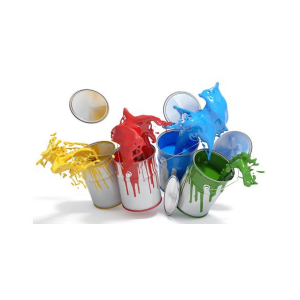When coatings are exposed to the outdoors, factors such as moisture, heat and UV radiation can cause them to degrade. Generally speaking, the most susceptible components in coatings are film forming resins and powders. Ultraviolet radiation and water cause these materials to undergo chemical degradation, and these degradation reactions tend to accelerate when temperatures rise. The degradation of coatings caused by ultraviolet radiation is often referred to as photooxidation. The reaction is triggered by ultraviolet radiation. Oxygen in the atmosphere is involved in the chemical degradation. Such photon-absorbing substances are called chromophores and can be the end groups of pigment particles, backbone or polymer binders, impurities, residual solvents, or additives. Once the photons are absorbed, the chromophore emits energy. This process is usually achieved by breaking the covalent bond to form two free radicals. These radicals are typically highly reactive to oxygen and combine with oxygen to form oxygen-centered free radicals. Once formed, these radicals can break the bonds of other organic chemicals through various chemical steps, creating a chain reaction that leads to polymer degradation. Depending on the polymer, an increase or decrease in cross-linking density, or a larger or smaller number of molecules, can be observed. The former may cause coating cracking; The latter may lead to coating viscidity, solvent resistance or scratch resistance. And the paint gloss will be lost, and the color will change.
In addition to photooxidation, the film forming resin in the coating can be degraded by hydrolysis, especially when the temperature of the coating is increased under high sunlight. Under these conditions, absorbed water molecules in the coating can attack the covalent bonds in the resin and sever the polymer chains, resulting in a lower molecular weight. Polyester and alkyd resins are more susceptible to this effect than polyurethanes and epoxies.
| PRODUCT | CAS NUMBER | EQUIVALENT | DESCRIPTION |
| UV1 | 57834-33-0 | UV1 is a highly effective anti-uv additive, widely used in polyurethane, adhesive, foam and other materials. | |
| UV3303 | 586400-06-8 | UV3 is recommended in PU (TPU, RIM) and engineering plastics(PET, PC, PC, ABS, PA, PBT) | |
| UV3331 | 147783-69-5 | SANDUVOR PR 31 | UV 3331 is a hindered amine light stabilizer
(HALS) with a UV absorber functionality. It is characterized by its excellent efficiency and its ability to be fixed into the binder or the polymer matrix during UV exposure. UV3331 can be used in polyolefine, polystyrene plastic, PVC, PBT and other materials. |
| UV3325 | 7443-25-6
|
SANDUVOR PR 25 | UV 3325 is a UV-B absorber for PVC, polyesters, PC, polyamides, styrene plastics, EVA copolymers, and cellulosics.
|
| LS123 | 129757-67-1 | TINUVIN 123 | LS123 is used in automotive coatings, industrial coatings, decorative coatings, wood coatings, especially for high solids, acid curing automotive and industrial paints. |
| LS292 | 41556-26-7
82919-37-7 |
TINUVIN 292 | LS292 can effectively prevent cracking, loss of light and other lacquer disease, can significantly improve the service life of the coating, and the product at room temperature will not crystallize. |
| LS765 | 41556-26-7
82919-37-7 |
TINUVIN 765 | LS765 is used in coatings, especially automotive paints to prevent aging.
LS765 is a highly effective liquid stabilizer for a wide variety of polymers and applications, including polyurethanes, sealants, adhesives, elastomers, unsaturated polyesters, acrylics, vinyl polymers (PVB, PVC), styrene homopolymers and copolymers, polyene vertical, liquid color concentrates and other organic substrates. |







